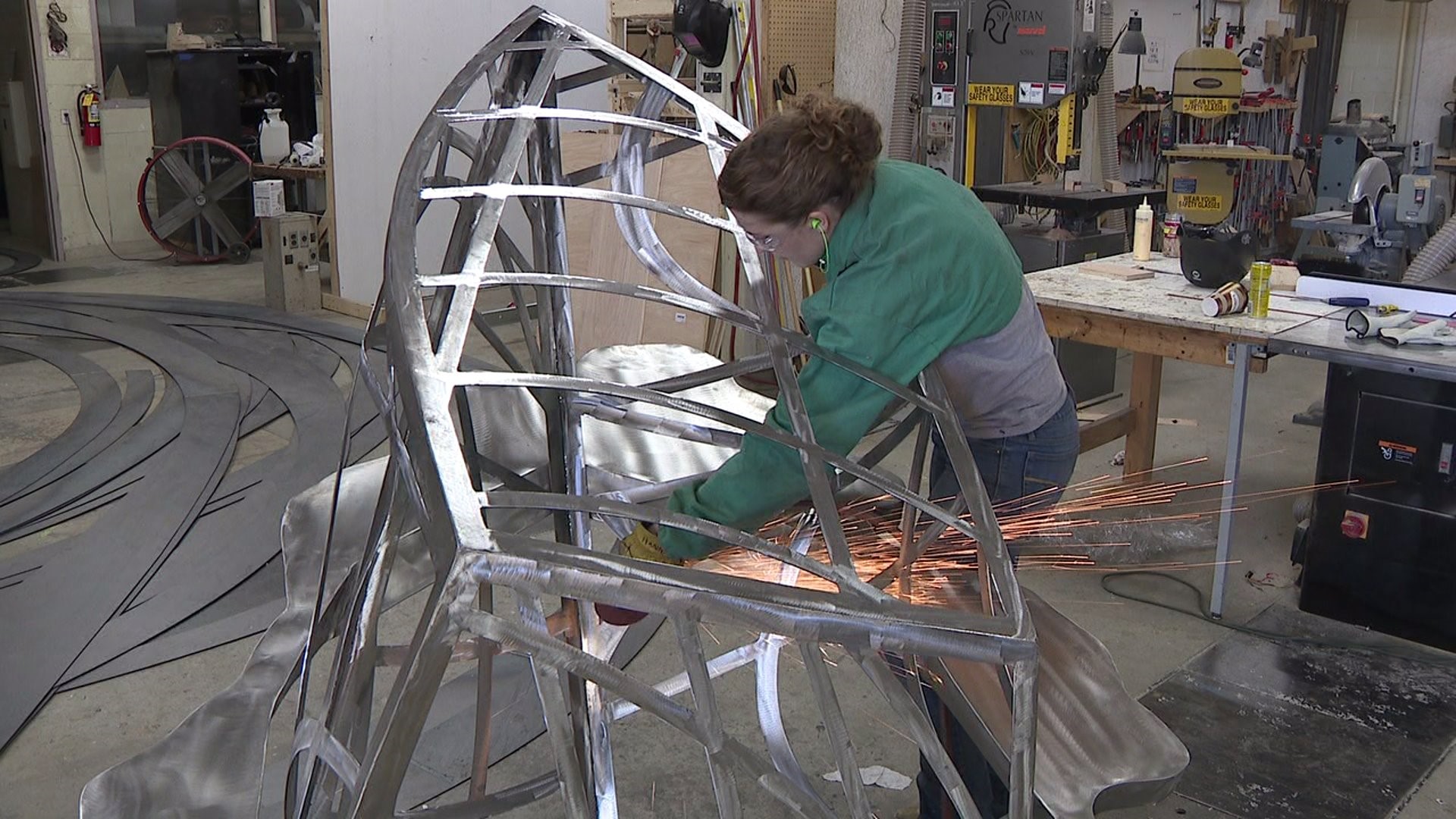CEDAR FALLS, Iowa -- For decades, Iowa taxpayers have been paying for public art projects at the state's universities, prisons and rest stops. Lawmakers, though, have decided that won't be the case any longer.
Since 1979, Iowa law has required that .5 percent of the construction costs for any new or renovated state building must be dedicated to public art. Known as the Art in State Buildings program, it has resulted in murals, sculptures and paintings at college campuses, state parks, government buildings, and prisons.
Many of those sculptures were built at the University of Northern Iowa's public art incubator, where students help professional artists fabricate their work.
"It's hard to quantify what public art brings to a campus or space, but once you take it away, that's when people really notice it's gone -- the void, you know?" said Dan Perry, an artist who also helps run the public art incubator
However, as part of the appropriations bill that passed at the end of the legislative session, Iowa lawmakers have voted to repeal the Art in State Buildings law.
"Every dollar the state spends, we take it from somebody, so you've got to be very considerate of that," said Rep. Norlin Mommsen, R-DeWitt.
Mommsen said the law required art at every state building -- even warehouses and hog barns. He believes it's unnecessary, especially as more architects incorporate art into the buildings themselves.
"I look at our Capitol -- I mean, what a beautiful piece of art. And I don't think that was mandated," said Mommsen. "I think that's a masterpiece in itself, and that's the architect that did that. I think that's kinda the phase we're in now, with architects incorporating that into their designs."
For artists and instructors at UNI, however, it's a frustrating loss.
"That half of one percent's going to get spent on something, right? So to me, it's a false way of presenting the notion that you're saving money," said Tom Stancliffe, a professor of art at UNI.
"This is such a small fraction of the budget, and you can have a real, meaningful experience with this sort of stuff," said Perry. "It's a quality of life issue for me."
Many public art programs still exist at the local level throughout the state, including in the Quad Cities.
Those will be unaffected by the repeal of this law.

